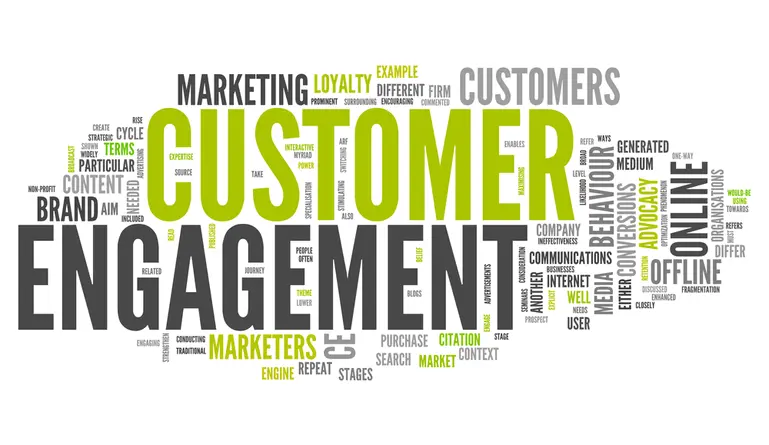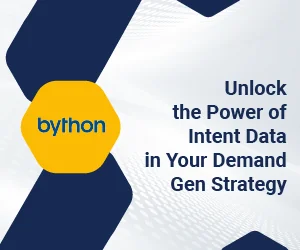We often come across articles promising customer engagement and driving omnichannel traffic for increased brand recognition. The statistics show that 78% of the clients(1) prefer omnichannel customer engagement. It is tough to measure and even tougher to measure. Corporates adopt different strategies to acquire new customers while keeping previous buyers in the loop.
What is Customer Engagement?
The measure of a brand’s interaction with its customers across the website, social media platforms, and all other touchpoints throughout the product lifecycle is known as customer engagement. The solutions include consistent engagement with buyers on different channels to strengthen human-to-human connection and add value to the customer-buyer relationship.
We have moved from brick-and-mortar stores to online e-commerce websites, however, there’s one thing that has not changed- the belief in the mantra that customer is always right and the king. Big-commerce giants have taught us that its metrics should be closely managed and measured for high returns and loyal customers.
The definition is not limited to interaction, services, support, and sales. A full-proof customer engagement plan involves the on-going and consistent habit of corporate anticipating buyers’ needs. Keeping in touch with customers foster healthy relationships, thereby, resulting in business growth.
Its tools are actively used by brands to educate, motivate, encourage, and persuade customers. An effective strategy lures a buyer into completing the buying journey.
What is the customer engagement cycle?
The customer engagement process varies with respect to specific industries. However, the overall stages involved in the customer engagement cycle are similar and can be defined as follows:
· Keeping aware of stages and product/service descriptions
Customers can’t know of your product or service magically. You have to find ways to showcase your product or service to the public. Making the first product impression worthwhile is important in the customer engagement cycle. In this stage, you come up with customer engagement ideas to showoff your product and to lure the customers to participate actively in the process. Product description should reflect on the buyers’ issues and needs.
· Customer product consideration
Customers, in stage two then hunt for crucial information regarding the product. Not only do they carry out proper research but also compare between 2 or more competitors and even, offerings. Creating a value proposition for your product is important as it gives confidence to the buyers to select your product amongst all.
· Making a purchase
People buy what’s convenient for them. However, it is hard for brands to get their customers to the end of the buying journey. Be flexible when it comes to that. Make sure you make the purchase journey as easy as possible, for the customers.
· Customer service
Customers always give feedback, regardless of how it will affect the brand. After purchasing the product, they expect exceptional customer service(2) in case they face a problem with the product. Therefore, one must be available to listen to complaints, issues, queries, and questions.
· Customer loyalty
Customers like rewarding the brand for good products and service in the form of reviews and valuable feedback. However, you must build loyal customers by offering them discounts in the form of incentives.
· Referrals
Good brands stay in a customer’s inner-conscious. People recommend brands to their peers if they have had a satisfactory experience. You should empower and push them into spreading kind words on behalf of your business. While the process is known as referral marketing, it is included in the customer engagement cycle. People use a variety of customer engagement channels to promote your brand while not knowing they are in the loop.
Importance of customer engagement
Why is customer engagement important? To start with, it increases revenue by 23%. Its techniques create an emotional and unbreakable connection between a brand and a buyer. Highly-engaged buyers buy more, promote more, and show more loyalty.
Not having a customer engagement strategy could lose you the opportunity of interacting with potential buyers. There’s no one-size-fits-for-all strategy that works for every industry. However, focusing on clarity, customer support, service, brand quality, and keeping the brand involved in customer engagement activities can increase brand recognition.
There are many successful customer engagement examples to highlight its importance. Wait for it, as we have a separate section for it.
What are the types of customer engagement?
With new customer engagement technologies, options are unlimited for marketers to monitor, predict, and improve engagement levels. There are 4 main types:
· Active engagement
Active engagement is the use of traditional channels, mobile devices, and social media platforms to interact with customers. The customers provide valuable feedback and brands reply sensibly to increase their brand recognition. Customers make the best use of your service and product. They can make sensible suggestions and recommendations to you for improving the product.
To increase active engagement, you should understand the entire customer engagement cycle and access to technology. Use the right technology to participate in group conversations, forums, peer-to-peer communities, and private conversations. Make sure the process you adhere to, is reliable, flexible, and acceptable to all the customers. other than that, you can encourage the employees to participate effectively in fostering customer relationships.
· Emotional engagement
Owning a product associated with a brand enables the customers to develop feelings that need to be addressed for success. It’s very challenging to measure emotions. Customers who are highly engaged are attached to the company. They complain less and admire more. Loyal customers even go to great lengths to defend brands on social media platforms.
· Rational engagement
Rational engagement involves customers who want to acquire full knowledge of a product or a service. customers who know everything about your product, including the description, quality, quantity, details, and brand’s values are more likely to engage with you on public platforms.
· Ethical engagement
Ethical engagement is not confined to the materialistic values of a brand. Every organization adheres to an ethical policy or a framework as it helps to deal with customers, suppliers, employees, and business partners. Ethical engagement is sensitive and one can’t boast about the brand values on social media. One has to reflect their values so that customers can understand the manufacturing processes. CRM leaders play a great role in increasing ethical customer engagement.
What are the advantages of customer engagement?
Brands that deliver excellence have the most engaged customers. It is not something that comes with experience. Your product’s quality, values, and online presence increase engaged customers. By implementing a customer engagement strategy, you will reap the following benefits:
· Customer retention
Old customers coming back to buy more is a good sign. It means that your customers are satisfied with your product or service. Brands rarely change their email providers. Each feature of the product you sell holds importance for the customers. That’s the reason why they keep coming for more. Despite changing the features, previous customers tend to re-buy the product(3).
· Increased efforts from the customers
Customers are on a constant hunt to buy the lowest-priced product. But, if you engage with customers rightly, they will go out of their way and buy from you as you have invested in them, emotionally.
· A great number of referrals
If they like it, they will mention it. Referral marketing is something that the brand does not control. However, customer engagement can score you a great number of referrals. Most customers recommend the product or the service if they had liked it. Nothing is better for your business than word of mouth and an honest peer referral. Speaking frankly, it’s free marketing.
· Increased brand recognition
You have won numerous customers over with your values, product quality, and attention. You are no longer a service provider. Customer engagement creates an emotional bond, allowing customers to have personalized experiences.
Ways to improve customer engagement
Better the engagement, happier your customers are. To foster healthy customer relationships, you need an effective strategy that can affect your KPIs positively. Some of the ways to increase customer engagement:
· Provide relevant content to your customers
Understand your customers’ issues, requirements, and needs before providing them with a solution. Regardless of your niche, there’s always a way your product can improve someone’s situation. Curate engaging yet relevant content addressing their issues and the advantages of the solution you are providing. Keep open-ended communication with your customers in the form of user manuals, guides, training, articles, videos, etc.
· Create a social media community for your customers
Sharing and discussing problems creates a sense of belonging among the audience. Create a social media community where your customers can address their problems easily. That being said, be active and attentive more often.
Use the customer engagement platform to celebrate the audience and employees. Share your organization’s milestones apart from sharing info, updates, and changes regarding your product.
· Reward customer engagement
Step up your game if you expect loyalty from your customers. A reward program can help you increase it significantly. You can either sponsor fun trips or give incentives to the customers in the form of discounts.
Customer experience vs. Customer engagement
| Customer experience | Customer engagement |
|---|---|
| The overall perception of customers during brand interaction is known as customer experience | Engagement is customer-driven and is a measure of how well customers engage with your brand |
| It is the customer experience(4) that decides if people will come back for more. It happens passively | Whereas, customers choose to support and interact with your brand |
Successful customer engagement examples
Here are some organizations that learned all the better ways to engage customers:
· Duolingo
When using Duolingo, a notorious language-learning app, the user sets on a personalized from the second they sign up until his last lecture. The user has to answer numerous questions while creating a profile. It might seem like moving back and forth on the app but it’s a form of engagement.
· Casper
Casper, a mattress-producing corporate has designed a free chatbot for insomniacs to entertain potential leads. While it seems like a wild idea, this chatbot was able to pull sales worth $100 million immediately after its launch.
· Polaroid Originals
Polaroid originals work on reward engagement and present awards to their customers every time they make a re-purchase. Whenever a client likes their Facebook page or reacts to a tweet on Twitter, he gets a reward for his future purchase.
· Netflix
Netflix is all about using its platform in full capacity to interact with the customers. Every time a user rates or provides a negative review for the movie or the show, the platform gathers about the user’s taste and suggest movies and shows as per the user’s preferences.
Top customer engagement platforms in 2021
These customer engagement platforms have managed to be on our list and here are some reasons for that:
· Zendesk
Zendesk can interact with multiple customers through social media, phone calls, messages, emails, and other channels. The software is easy to scale, implement, and use. Communication management, Analytics churn management, content syndication, and community management are some of the best features of Zendesk.
· LiveChat
LiveChat is one of the fastest ways to increase customer engagement as you can answer queries and problems immediately. This software is even faster than a phone call.
· ChurnZero
Next-generation communication, gamification, customer segmentation, customer health scores, and managing real-time alerts are considered the best features of ChurnZero. Third-party platforms integrate easily with this software. It also offers some automation features for customer engagement and marketing.
What are customer engagement metrics?
Metrics show how the audience is engaging with the brand. Here are some important metrics crucial when measuring customer engagement:
- Conversion rate
- Session time
- Net promoter score
- Pages per session
- Pageviews
- Bounce rate
- Top exit pages
- Scroll depth
- Unique visitors
- Returning vs. new visitors
What are the current customer engagement trends?
Here are some of the key trends of 2020 that will continue to evolve into 2021:
- Engaging ethically and building trust are great ways to build a customer’s loyalty to your brand
- Connectivity, timeliness, and personalization are the foundation of an effective strategy
- Customers are open to interacting with brands using new and improved technology
- It accounts for half of a customer’s happiness
Final Thoughts
Customer engagement is always evolving. It is not confined by a specific, set-it-and-forget-it roadmap or even by a checklist you can follow and implement to win over clients. The key to increasing customer engagement is to find out what works best and what does not for your organization and for your target audience.









